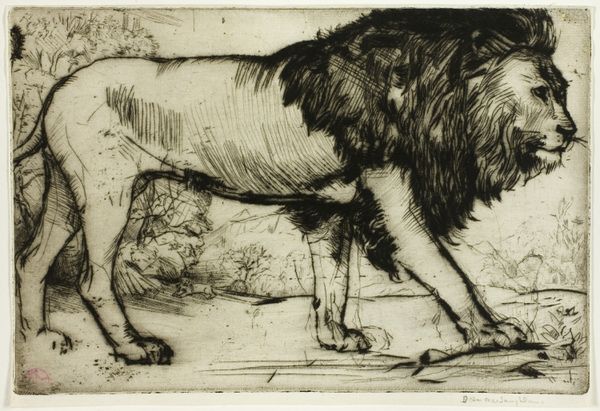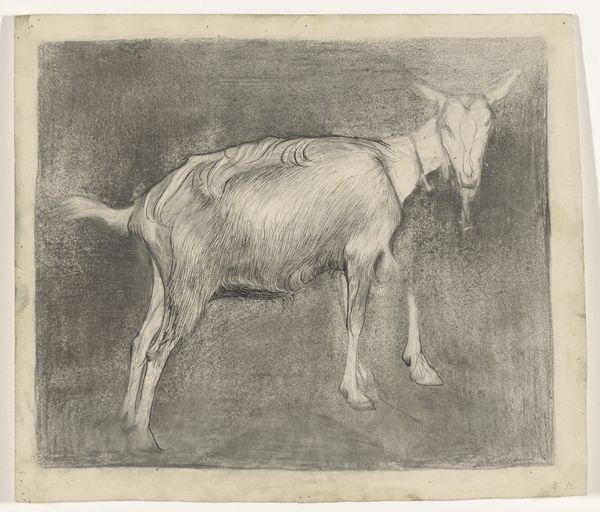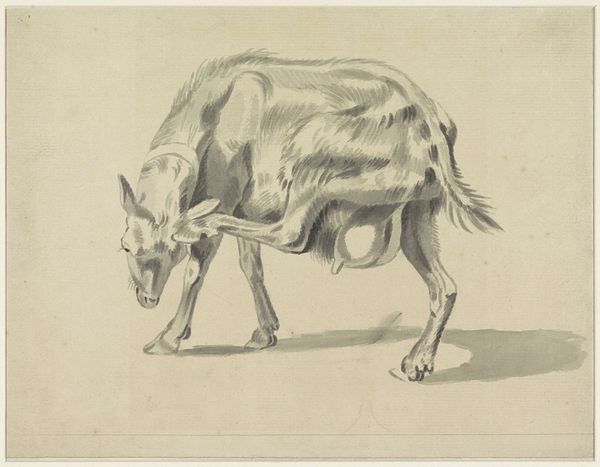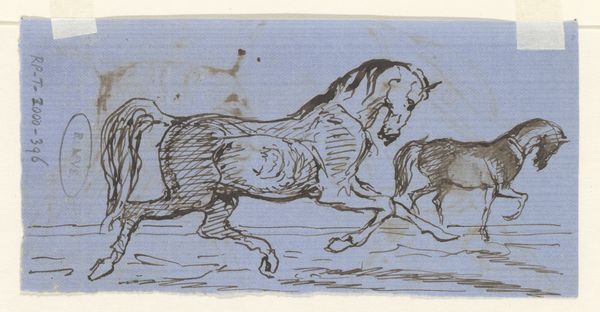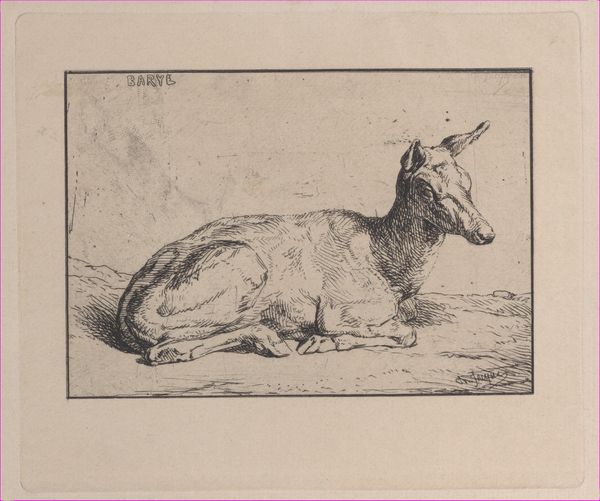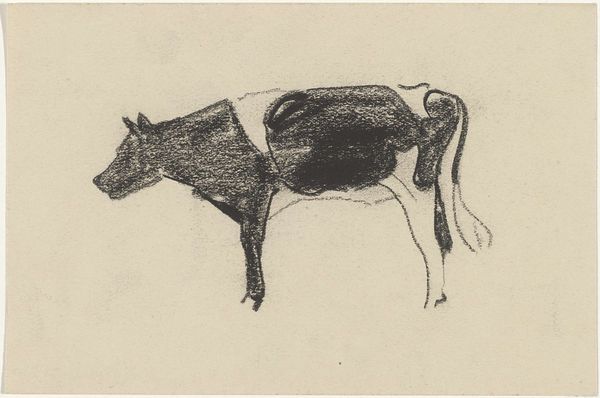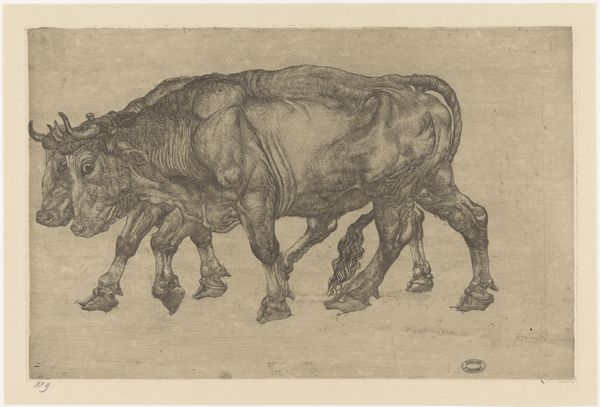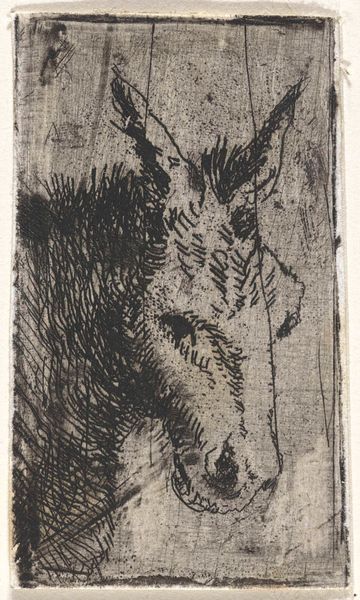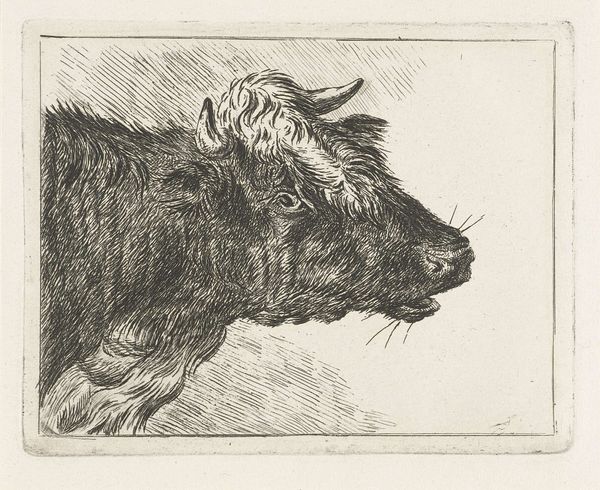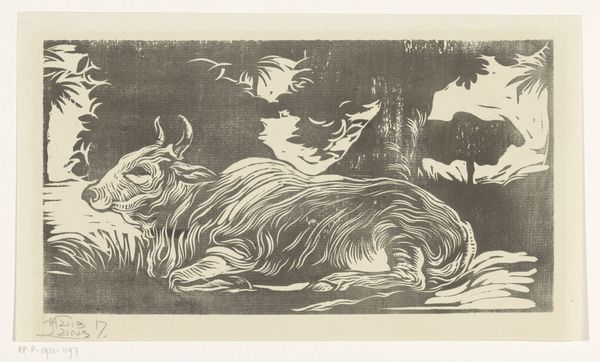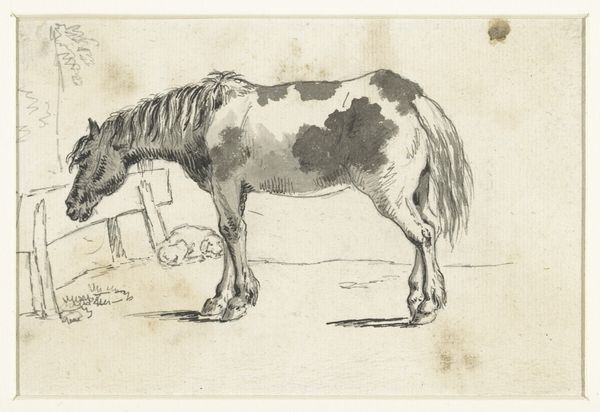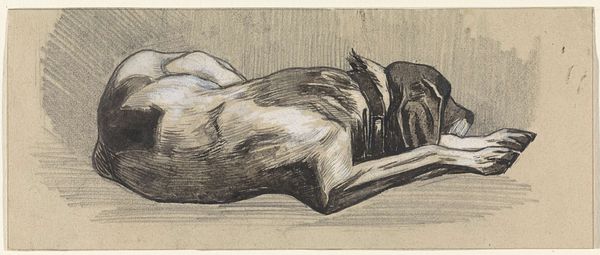
drawing, print, woodcut
#
drawing
#
animal
# print
#
figuration
#
woodcut
#
realism
Dimensions: height 136 mm, width 188 mm
Copyright: Rijks Museum: Open Domain
Curator: Here at the Rijksmuseum, we have "Geit," or "Goat," a woodcut and drawing created by Emilius Wilhelmus Dehé, sometime between 1896 and 1931. Editor: Well, my immediate impression is one of tension, maybe even frustration. The goat’s mouth is open, it looks like it's bleating, maybe even screaming, against the stark, dark background. Curator: That's an interesting point, because if you examine it historically, representations of farm animals in art, particularly during this period, are loaded with social commentary. The relationship between rural life, labor, and exploitation were very charged. Editor: Absolutely, and given the time frame, we also must read that dynamic of power with relation to increasing industrialization. I wonder about this goat's specific experience of gender. Curator: Interesting thought. While the drawing captures a realistic depiction of a goat, down to the texture of its fur and its lean physique, it also projects something symbolic. I want to know about the politics of the art market then. How did figuration like this position itself in opposition to more modern art movements? Editor: The politics are certainly complex! Did this artist have specific activist inclinations we should be aware of to influence the viewer's perspective? Curator: Well, the impact of this work on the community may reflect larger political discussions, particularly for agricultural policy. Considering what institutions collected similar artwork also gives insights on class and aesthetic tastes. Editor: These kinds of glimpses offer a much more layered viewing experience. Thank you for sharing! Curator: Indeed. And through that, hopefully we can invite meaningful dialogue and a re-evaluation of power structures, artistic creation, and critical engagement.
Comments
No comments
Be the first to comment and join the conversation on the ultimate creative platform.
